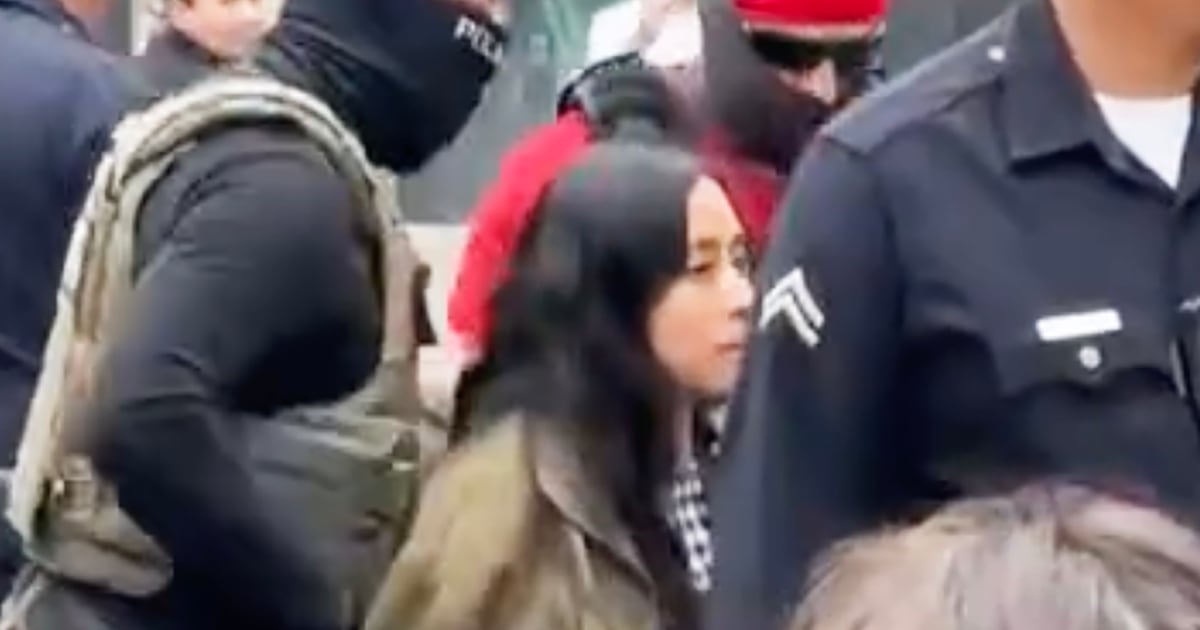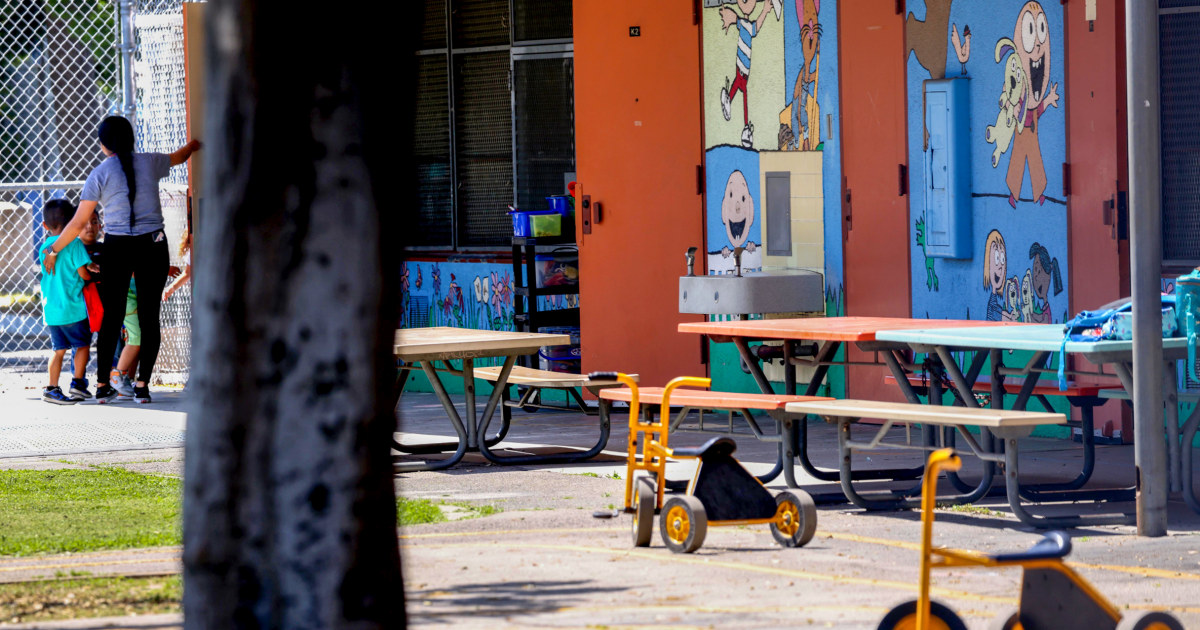Ever since federal immigration raids ramped up across California, triggering fierce protests that prompted President Trump to deploy troops to Los Angeles, the state has emerged as the symbolic battleground of the administration’s deportation campaign.
But even as arrests soared, California was not the epicenter of Trump’s anti-immigrant project.
In the first five months of Trump’s second term, California lagged behind the staunchly red states of Texas and Florida in the total arrests. According to a Los Angeles Times analysis of federal Immigration and Customs Enforcement data from the Deportation Data Project, Texas reported 26,341 arrests — nearly a quarter of all ICE arrests nationally — followed by 12,982 in Florida and 8,460 in California.
Even in June, when masked federal immigration agents swept through L.A., jumping out of vehicles to snatch people from bus stops, car washes and parking lots, California saw 3,391 undocumented immigrants arrested — more than Florida, but still only about half as many as Texas.
When factoring in population, California drops to 27th in the nation, with 217 arrests per million residents — about a quarter of Texas’ 864 arrests per million and less than half of a whole slew of states including Florida, Arkansas, Utah, Arizona, Louisiana, Oklahoma, Tennessee, Georgia, Virginia and Nevada.
The data, released after a Freedom of Information Act lawsuit against the government, excludes arrests made after June 26 and lacks identifying state details in 5% of cases. Nevertheless, it provides the most detailed look yet of national ICE operations.
Immigration experts say it is not surprising that California — home to the largest number of undocumented immigrants in the nation and the birthplace of the Chicano movement — lags behind Republican states in the total number of arrests or arrests as a percentage of the population.
“The numbers are secondary to the performative politics of the moment,” said Austin Kocher, a geographer and research assistant professor at Syracuse University who specializes in immigration enforcement.
Part of the reason Republican-dominated states have higher arrest numbers — particularly when measured against population — is they have a longer history of working directly with ICE, and a stronger interest in collaboration. In red states from Texas to Mississippi, local law enforcement officers routinely cooperate with federal agents, either by taking on ICE duties through so-called 287(g) agreements or by identifying undocumented immigrants who are incarcerated and letting ICE into their jails and prisons.
Indeed, data show that just 7% of ICE arrests made this year in California were made through the Criminal Alien Program, an initiative that requests that local law enforcement identify undocumented immigrants in federal, state and local prisons and jails.
That’s significantly lower than the 55% of arrests in Texas and 46% in Florida made through prisons or jails. And other conservative states with smaller populations relied on the program even more heavily: 75% of ICE arrests in Alabama and 71% in Indiana took place via prisons and jails.
“State cooperation has been an important buffer in ICE arrests and ICE operations in general for years,” said Ariel Ruiz Soto, a Sacramento-based senior policy analyst at the Migration Policy Institute. “We’ve seen that states are not only willing to cooperate with ICE, but are proactively now establishing 287(g) agreements with their local law enforcement, are naturally going to cast a wider net of enforcement in the boundaries of that state.”
While California considers only some criminal offenses, such as serious felonies, significant enough to share information with ICE; Texas and Florida are more likely to report offenses that may not be as severe, such as minor traffic infractions.
Still, even if fewer people were arrested in California than other states, it also witnessed one of the most dramatic increases in arrests in the country.
California ranked 30th in ICE arrests per million in February. By June, the state had climbed to 10th place.
ICE arrested around 8,460 immigrants across California between Jan. 20 and June 26, a 212% increase compared with the five months before Trump took office. That contrasts with a 159% increase nationally for the same period.
Much of ICE’s activity in California was hyper-focused on Greater Los Angeles: About 60% of ICE arrests in the state took place in the seven counties in and around L.A. during Trump’s first five months in office. The number of arrests in the Los Angeles area soared from 463 in January to 2,185 in June — a 372% spike, second only to New York’s 432% increase.
Even if California is not seeing the largest numbers of arrests, experts say, the dramatic increase in captures stands out from other places because of the lack of official cooperation and public hostility toward immigration agents.
“A smaller increase in a place that has very little cooperation is, in a way, more significant than seeing an increase in areas that have lots and lots of cooperation,” Kocher said.
ICE agents, Kocher said, have to work much harder to arrest immigrants in places like L.A. or California that define themselves as “sanctuary” jurisdictions and limit their cooperation with federal immigration agents.
“They really had to go out of their way,” he said.
Trump administration officials have long argued that sanctuary jurisdictions give them no choice but to round up people on the streets.
Not long after Trump won the 2024 election and the L.A. City Council voted unanimously to block any city resources from being used for immigration enforcement, incoming border enforcement advisor Tom Homan threatened an onslaught.
“If I’ve got to send twice as many officers to L.A. because we’re not getting any assistance, then that’s what we’re going to do,” Homan told Newsmax.
With limited cooperation from California jails, ICE agents went out into communities, rounding up people they suspected of being undocumented on street corners and at factories and farms.
That shift in tactics meant that immigrants with criminal convictions no longer made up the bulk of California ICE arrests. While about 66% of immigrants arrested in the first four months of the year had criminal convictions, that percentage fell to 30% in June.
The sweeping nature of the arrests drew immediate criticism as racial profiling and spawned robust community condemnation.
Some immigration experts and community activists cite the organized resistance in L.A. as another reason the numbers of ICE arrests were lower in California than in Texas and even lower than dozens of states by percentage of population.
“The reason is the resistance, organized resistance: the people who literally went to war with them in Paramount, in Compton, in Bell and Huntington Park,” said Ron Gochez, a member of Unión del Barrio Los Angeles, an independent political group that patrols neighborhoods to alert residents of immigration sweeps.
“They’ve been chased out in the different neighborhoods where we organize,” he said. “We’ve been able to mobilize the community to surround the agents when they come to kidnap people.”
In L.A., activists patrolled the streets from 5 a.m. until 11 p.m., seven days a week, Gochez said. They faced off with ICE agents in Home Depot parking lots and at warehouses and farms.
“We were doing everything that we could to try to keep up with the intensity of the military assault,” Gochez said. “The resistance was strong. … We’ve been able, on numerous occasions, to successfully defend the communities and drive them out of our community.”
The protests prompted Trump to deploy the National Guard and Marines in June, with the stated purpose of protecting federal buildings and personnel. But the administration’s ability to ratchet up arrests hit a roadblock on July 11. That’s when a federal judge issued a temporary restraining order blocking immigration agents in Southern and Central California from targeting people based on race, language, vocation or location without reasonable suspicion that they are in the U.S. illegally.
That decision was upheld last week by the 9th U.S. Circuit Court of Appeals. But on Thursday, the Trump administration petitioned the Supreme Court to lift the temporary ban on its patrols, arguing that it “threatens to upend immigration officials’ ability to enforce the immigration laws in the Central District of California by hanging the prospect of contempt over every investigative stop.”
The order led to a significant drop in arrests across Los Angeles last month. But this week, federal agents carried out a series of raids at Home Depots from Westlake to Van Nuys.
Trump administration officials have indicated that the July ruling and arrest slowdown do not signal a permanent change in tactics.
“Sanctuary cities are going to get exactly what they don’t want: more agents in the communities and more work site enforcement,” Homan told reporters two weeks after the court blocked roving patrols. “Why is that? Because they won’t let one agent arrest one bad guy in the jail.”
U.S. Border Patrol Sector Chief Gregory Bovino, who has been leading operations in California, posted a fast-moving video on X that spliced L.A. Mayor Karen Bass telling reporters that “this experiment that was practiced on the city of Los Angeles failed” with video showing him grinning. Then, as a frenetic drum and bass mix kicked in, federal agents jump out of a van and chase people.
“When you’re faced with opposition to law and order, what do you do?” Bovino wrote. “Improvise, adapt, and overcome!”
Clearly, the Trump administration is willing to expend significant resources to make California a political battleground and test case, Ruiz Soto said. The question is, at what economic and political cost?
“If they really wanted to scale up and ramp up their deportations,” Ruiz Soto said, “they could go to other places, do it more more safely, more quickly and more efficiently.”










